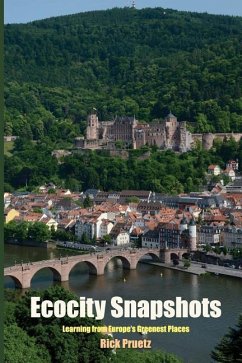Cities are key to our planet's future. Over half of us now live in cities and an estimated 70 percent of the world's total population will be urban by 2050 -- over six billion people. Will tomorrow's cities continue to waste land, squander resources and contaminate water and air in an escalation of our centuries-old war on the Earth? Or will we build and rebuild cities that return us to a balance with nature in ways that are mutually beneficial to people and our fellow creatures? Europe's greenest places offer hope for a positive outcome. The 19 cities profiled in this book are reintroducing greenways and stream corridors into the urban landscape, often in ways that assist with floodwater management and biodiversity while reconnecting people with their environment. These cities are building compact, diverse neighborhoods that can easily be navigated on foot or by bicycle and public transportation. They are turning brownfields into ecodistricts that expand the limits of closed-loop energy, waste and water systems. They are cutting the greenhouse gas emissions that cause climate change and pursuing a carbon-free future by fueling district heating and power systems using wind, water, geothermal, biomass and other innovative technologies. Recognizing that individual behavior is crucial to sustainability, these cities motivate their citizens to understand the connection between their lifestyles and the health of the planet. Ironically, while naysayers claim that sustainability is unattainable or unaffordable, these cities are finding that green is good for economic development, generating businesses and jobs in rapidly-growing sectors and attracting the highly-prized creative class with their mix of vibrant urbanity and accessible nature.
Hinweis: Dieser Artikel kann nur an eine deutsche Lieferadresse ausgeliefert werden.
Hinweis: Dieser Artikel kann nur an eine deutsche Lieferadresse ausgeliefert werden.








